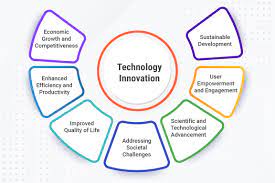The Intersection of AI and Data Science: Transforming the Future
As technology continues to evolve at an unprecedented pace, two fields have emerged as pivotal forces driving innovation and transformation across industries: Artificial Intelligence (AI) and Data Science. While each has its own distinct focus, their intersection is where the magic truly happens. Together, they are reshaping how businesses operate, how decisions are made, and how we interact with the world around us.
Understanding AI and Data Science
Artificial Intelligence refers to the simulation of human intelligence processes by machines, particularly computer systems. These processes include learning (the acquisition of information and rules for using it), reasoning (using rules to reach approximate or definite conclusions), and self-correction. AI encompasses a variety of subfields such as machine learning, natural language processing, robotics, and more.
Data Science, on the other hand, is a multidisciplinary field that uses scientific methods, processes, algorithms, and systems to extract knowledge and insights from structured and unstructured data. It involves a blend of skills from statistics, computer science, domain expertise, and data engineering.
The Synergy Between AI and Data Science
The synergy between AI and Data Science lies in their complementary nature. Data Science provides the raw material—vast amounts of data—that AI systems use to learn patterns and make predictions. In turn, AI enhances Data Science by automating complex data analyses that would be time-consuming or impossible for humans to perform manually.
- Enhanced Decision-Making: By leveraging AI algorithms on large datasets processed through data science techniques, organisations can make more informed decisions based on predictive analytics.
- Automation: Routine tasks that involve data analysis can be automated using AI technologies like machine learning models developed through data science methodologies.
- Personalisation: Businesses can offer personalised experiences by analysing customer behaviour through data science tools powered by AI-driven insights.
Real-World Applications
The intersection of AI and Data Science is already making significant impacts across various sectors:
- Healthcare: From predicting patient outcomes to personalising treatment plans based on genetic information, these technologies are revolutionising medical care.
- Finance: Fraud detection systems utilise machine learning models trained on historical transaction data to identify unusual patterns in real-time.
- E-commerce: Recommendation engines driven by sophisticated algorithms analyse user preferences to suggest products tailored specifically for them.
The Future Outlook
The future holds immense potential for further integration between AI and Data Science as both fields continue advancing rapidly. As computational power increases alongside improvements in algorithmic efficiency—particularly within deep learning frameworks—we can expect even greater breakthroughs ahead.
This convergence will likely lead not only towards enhanced business operations but also societal benefits such as improved public services or smarter cities capable of responding dynamically according to citizens’ needs while ensuring sustainability goals remain intact throughout development processes globally speaking!
Conclusion
The intersection between Artificial Intelligence (AI) & Data Sciences represents one most exciting frontiers today’s technological landscape offers us all! It promises transformative changes across industries worldwide while empowering individuals alike thanks largely due its ability harness vast amounts information efficiently effectively possible before now opening up new possibilities previously unimaginable just few years ago alone!
Five Key Advantages of AI and Data Science: Revolutionising Decision-Making, Efficiency, Personalisation, Fraud Detection, and Business Optimisation
- Enhanced decision-making through predictive analytics
- Automation of routine tasks for increased efficiency
- Personalised customer experiences based on data-driven insights
- Improved fraud detection capabilities in various industries
- Optimisation of business processes through AI-powered data analysis
Navigating the Challenges of AI and Data Science: Privacy, Bias, Overreliance, and Security Risks
Enhanced decision-making through predictive analytics
Enhanced decision-making through predictive analytics is one of the most significant advantages offered by the synergy of AI and data science. By harnessing vast amounts of historical and real-time data, AI-driven predictive models can identify patterns and trends that may not be immediately apparent to human analysts. This capability allows organisations to anticipate future outcomes with greater accuracy, enabling them to make informed decisions that are proactive rather than reactive. Whether it’s forecasting market trends, optimising supply chains, or improving customer engagement strategies, predictive analytics provides businesses with a powerful tool to stay ahead of the competition. By reducing uncertainty and minimising risks, it empowers decision-makers to allocate resources more effectively and strategically plan for future growth.
Automation of routine tasks for increased efficiency
The automation of routine tasks through the integration of AI and data science significantly enhances operational efficiency across various sectors. By deploying AI-driven algorithms, businesses can streamline repetitive processes that traditionally consumed valuable time and resources. This not only reduces the likelihood of human error but also allows employees to focus on more strategic, value-added activities. For instance, in industries such as finance and customer service, AI systems can handle tasks like data entry, transaction processing, and initial customer inquiries with remarkable speed and accuracy. As a result, organisations can improve productivity while reallocating human talent towards innovation and problem-solving initiatives, ultimately driving growth and competitiveness.
Personalised customer experiences based on data-driven insights
In today’s competitive marketplace, personalised customer experiences have become a vital differentiator for businesses, and the combination of AI and data science is at the forefront of this transformation. By harnessing data-driven insights, companies can tailor their offerings to meet individual customer preferences and behaviours. AI algorithms analyse vast amounts of data to discern patterns and predict future actions, allowing businesses to anticipate needs and deliver customised solutions. This personalisation not only enhances customer satisfaction but also fosters loyalty, as consumers increasingly expect brands to understand and cater to their unique requirements. As a result, organisations that effectively leverage AI and data science are better positioned to build meaningful relationships with their customers, ultimately driving growth and success.
Improved fraud detection capabilities in various industries
The integration of Artificial Intelligence (AI) and Data Science has significantly enhanced fraud detection capabilities across various industries. By leveraging advanced algorithms and machine learning models, organisations can analyse vast amounts of data in real-time to identify suspicious patterns and anomalies indicative of fraudulent activities. This proactive approach enables businesses in sectors such as finance, healthcare, and e-commerce to detect and prevent fraudulent transactions swiftly, protecting both themselves and their customers from potential financial losses. This heightened level of accuracy and efficiency in fraud detection not only safeguards the integrity of operations but also fosters trust among stakeholders, ultimately leading to a more secure and resilient business environment.
Optimisation of business processes through AI-powered data analysis
Optimisation of business processes through AI-powered data analysis has become a game-changer for organisations striving to enhance efficiency and productivity. By leveraging advanced algorithms and machine learning models, businesses can analyse vast amounts of data in real-time to identify patterns, trends, and anomalies that would be impossible to detect manually. This enables companies to streamline operations, reduce costs, and improve decision-making by providing actionable insights into every aspect of their processes. From supply chain management to customer service, AI-driven data analysis allows for the automation of routine tasks and the optimisation of resource allocation, ultimately leading to more agile and responsive business strategies.
Privacy Concerns
The integration of AI and Data Science into various sectors has sparked significant privacy concerns due to the extensive collection and analysis of personal data. As these technologies require vast datasets to function effectively, they often involve sensitive information about individuals, ranging from browsing habits to health records. This raises the risk of privacy breaches, where unauthorised parties might gain access to personal data, potentially leading to identity theft or financial fraud. Additionally, there is a growing concern about data misuse, where organisations might exploit personal information for purposes beyond what users have consented to, such as targeted advertising or surveillance. As a result, there is an increasing demand for robust data protection regulations and ethical guidelines to ensure that individuals’ privacy rights are upheld in the age of AI and Data Science.
Bias in Algorithms
Bias in algorithms is a significant concern in the realm of AI and data science, as machine learning models can inadvertently inherit biases present in the training data. This can result in discriminatory outcomes or reinforce existing social inequalities, as biased data often reflects historical prejudices and systemic imbalances. When these biases are embedded into algorithms, they can perpetuate unfair treatment across various sectors, including hiring practices, law enforcement, and lending decisions. The lack of diversity in data sets or flawed data collection methods further exacerbates the issue, making it crucial for developers to implement robust strategies for detecting and mitigating bias to ensure ethical and equitable AI applications.
Overreliance on Technology
The overreliance on AI and Data Science solutions poses a significant concern, as it can lead to a decline in critical thinking skills and human decision-making capabilities. When organisations and individuals become too dependent on automated systems for analysis and decision-making, there is a risk that they may overlook the importance of human insight and intuition. This dependency might result in a diminished ability to question, interpret, and challenge the outputs generated by AI models, potentially leading to errors or biased outcomes going unchecked. Furthermore, the erosion of these essential cognitive skills could hinder innovation and problem-solving abilities in the long term, as people may become less inclined to engage deeply with complex issues when technology appears to offer ready-made solutions.
Security Risks
As AI and data science become integral to performing sensitive tasks, they also introduce significant security risks. The increased reliance on these technologies makes them attractive targets for cyberattacks, as malicious actors seek to exploit vulnerabilities within AI systems. These systems, often handling vast amounts of sensitive data, can be compromised if not adequately protected. A successful breach could lead to data theft, manipulation of AI algorithms, or even disruption of critical services. Therefore, as organisations adopt AI-driven solutions, it is essential to prioritise robust cybersecurity measures to safeguard against potential threats and ensure the integrity and confidentiality of the data being processed.






